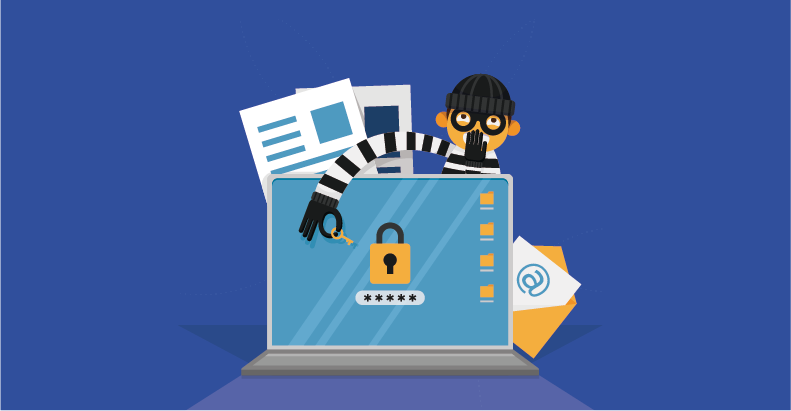Automating End-to-End Testing for Internet Banking Applications

- April 22, 2025
- Malaika Saeed
Internet banking is one of the most popular ways for people to perform financial transactions. It’s no secret that no one likes to go to the bank to make transfers. Some don’t even like to access the desktop website, since 88% of people prefer using the application instead.
Banking institutions are following this trend, and end-to-end (E2E) testing has become an essential part of quality assurance. By using automation, teams can validate the workflow of an app from start to finish. Proper testing ensures that components work as they should in real-world scenarios, catching errors early on. This article will offer some insight into how to automate E2E testing, making it more reliable for banking apps.
Why End-to-End Testing Is Important
End-to-end testing has an essential role in Internet banking. Its role is to ensure smooth workflow, going from the initial transaction to completion. Below are some reasons why banks use load testing services for this.
- Supports Digital Transformation
Digital banking is on the rise, and 73% of the interactions happen in digital channels now. Features such as mobile banking and fraud detection are becoming a necessity for any app to work without issues.
With automation, continuous testing supports this transformation and moves everything to digital platforms. End-to-end testing like this keeps things error-free when going paperless, improving efficiency.
- Ensures Compliance with Business Regulations
Banks are financial institutions and have to follow specific regulations. This includes everything from standard GDPR to PSD2 and PCI-DSS. That said, these regulations often change and can be missed if the tester is not careful.
When automated, E2E testing can help validate data encryption and security protocols. This ensures compliance with financial laws, protecting not only the user but also the banking institution from lawsuits.
- Improves Quality Assurance and Customer Experience
The customer is at the heart of everything, and Internet banking is no exception. When it comes to this system, people want a platform with smooth performance at all times. This includes peak load moments, seeing as it’s their money at hand here.
End-to-end testing uses automation to identify potential bugs before end users suffer from them. Stability and functionality become robust once backend issues and UI consistencies are caught. In the end, end-to-end testing makes sure customers enjoy smooth transactions with no disruptions.
- Promotes Better Privacy and Security
Cyber-security threats are on the rise, and financial institutions are the main targets. As a result, they have to put in place the best ways to safeguard the user data. If they fail to do so, they endanger not only their client’s data but also the credibility of their institution.
E2E testing with a reliable test automation company looks for vulnerabilities in the code that could affect user safety. Financial institutions should introduce this testing early on to cover every stage of the development process.
Challenges of E2E Testing for Internet Banking
E2E testing without the use of test automation services can bring a series of challenges. This includes the following:
- Offering Real-Time Updates
Nowadays, banking institutions are expected to provide real-time updates. Users expect to be notified immediately if there’s a fraud alert or instant balance changes. Since devices are constantly changing, banking applications may have a difficult time keeping up with these updates. Without automation, it’s difficult to ensure continuous data and accurate information.
- Ensuring Effective Data Transfers
Banks are usually connected to more than one database. For example, users can choose to connect with third-party services and transfer their money. It can be difficult to ensure seamless data transfer, and testing has to be rigorous to avoid issues. When not implemented correctly, it can lead to delays, duplicates, and even loss of financial information.
- Meeting Security Requirements
End-to-end testing requires the tester to perform security checks and find vulnerable points within the code. These can include threats such as session hijacking, unauthorized transfers, and more. Automated tests must simulate these attacks while meeting authentication and security protocols. As new threats are constantly emerging, application testing services have to be thorough and consistent.
- Maintaining Cross-Device Consistency
Owners of a bank account can usually access their data by using a mobile app, desktop browsers, and tablets. End-to-end testing has to ensure consumers enjoy a consistent experience. Functionality and features have to be the same, regardless of the screen size or browser.
Tips for Automating End-to-End Testing for Internet Banking
Automating end-to-end services is easy to do, as long as you follow a strategy. Test automation services such as Kualitatem can offer the support you need to ensure smooth flow. Whether you outsource or have your testing team handle the matter, this is what you’ll have to do:
- Set Up Clear Scenarios
First things first, determine scenarios for features such as user authentication, bill payments, or fund transfers. Automation should validate that all of the essential functions work as they should. Since banks handle all kinds of sensitive information, they need to validate that operations go smoothly, without crashing. Make sure to cover failure conditions and edge cases as well.
- Implement AI In the Testing Process
Automation can improve end-to-end testing, but to take things one step further, consider using AI tools. High-end testing software uses AI to generate test cases with higher coverage. This takes away the need to write time-wasting manual scripts. Plus, AI can adapt test automation once the code changes. This reduces maintenance while maintaining efficiency.
- Make High-Impact Areas a Priority
Some areas of Internet banking are more important than others. Regulatory compliance is most important. The last thing you want is a legal issue on your shoulders. Real-time transaction processing should also be a priority. Last but not least, testing should cover the system’s behavior during incorrect outputs and network failure.
- Consider API Testing
Automating API testing is not just advised in Internet banking, but strongly recommended. By automating these tests, the team can validate things such as transaction processing and recover account data. Moreover, by automating this procedure with the help of a software testing company, you can find potential issues early on.
- Set Up Continuous Testing
Code changes all the time as updates become mandatory. Testing these changes is essential to prevent a potential security issues. Consider integrating automated tests into the CI/CDCI/CD (Continuous Integration/Continuous Deployment) pipeline. This way, every update is automatically checked for bugs before it can reach the end user.
- Design Test Cases to Cover Realistic Scenarios
Last but not least, make sure to replicate the conditions under which the customer will use the app. For example, most people get their pay twice a month in the United States. To make it easier to follow, the majority chose the 1st and the 15th. Consider testing how the application will behave if there’s heavy app traffic during those days. You can also simulate bulk transactions. Moreover, look at how the application responds to millions of queries every second.
The Bottom Line
End-to-end testing is something that a banking application should not go without. By automating the process, it’s easier to improve the efficiency of the process. Consider using a test automation company such as Kualitatem to keep your Internet banking applications compliant.










